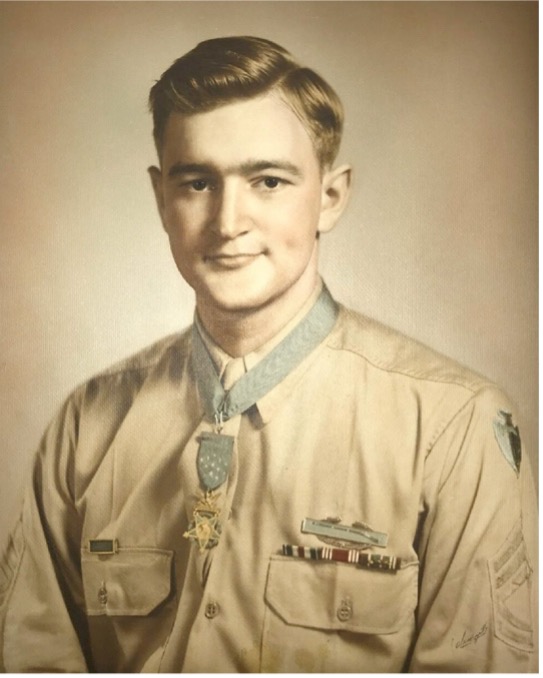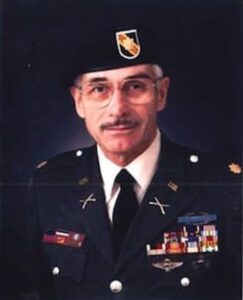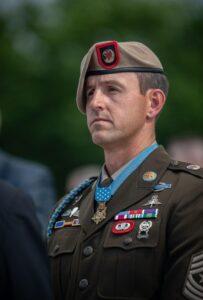ARLINGTON, TX – (April 7, 2021) – Charles Coolidge received the Medal of Honor on June 18, 1945, for his valor above and beyond the call of duty in World War II. With his passing yesterday, April 6, there is now only one living Medal of Honor recipient from the second World War and only 68 living recipients of the highest military award for valor in combat.

“Very few veterans of the Greatest Generation still walk among us. Yesterday, we lost one of the true heroes of World War II in Charles Coolidge. The loss of this amazing patriot will be felt throughout the country and the world. His dedication to service continued 76 years beyond the battlefield as he set an example of selfless leadership until he passed yesterday at the age of 99. His family is in our thoughts and prayers,” said National Medal of Honor Museum Foundation Chairman Charlotte Jones.
“We were all deeply saddened to learn of the passing of Charles Coolidge, who was a great hero of our republic,” said National Medal of Honor Museum Foundation Chief Executive Officer James T. Connors. “With just 68 Medal of Honor recipients alive today, his passing underscores the urgency and importance of our mission to build the National Medal of Honor Museum, Leadership Institute, and Monument. His powerful legacy and those of the others who received this highest honor must be preserved to inspire future generations of American patriots.”
The last remaining living Medal of Honor recipient from World War II is Hershel Woodrow “Woody” Williams, 97, who earned the Medal for valor during the Battle of Iwo Jima.
Charles Coolidge Medal of Honor Action
Leading a section of heavy machineguns supported by 1st Platoon, Company K, Coolidge took a position near Hill 623, east of Belmont sur Buttant, France, on 24 October 1944, with the mission of covering and supporting the right flank of the 3rd Battalion. Coolidge went forward with a sergeant of Company K to scout positions for coordinating the fire of the light and heavy machine guns. They ran into an enemy force in the woods estimated to be an infantry company. Coolidge, attempting to bluff the Germans by a show of assurance and boldness called upon them to surrender, whereupon the enemy opened fire. With his carbine, Coolidge wounded 2 of them. There being no officer present with the force, Coolidge at once assumed command. Many of the men were replacements recently arrived; this was their first experience under fire. Coolidge, ignoring of the enemy fire delivered at close range, walked along the position, calming and encouraging his men and directing their fire. The attack was thrown back. Through 25 and 26 October the enemy launched repeated attacks against the position of this combat group but each was repulsed due to Coolidge’s leadership. On 27 October, German infantry, supported by 2 tanks, made a determined attack on the position. The area was swept by enemy small arms, machine gun, and tank fire. Coolidge armed himself with a bazooka and advanced to within 25 yards of the tanks. His bazooka failed to function and he threw it aside. Taking all the hand grenades he could carry, he crawled forward and inflicted heavy casualties on the advancing enemy. Finally, it became apparent that the enemy, in greatly superior force, supported by tanks, would overrun the position. Coolidge directed and conducted an orderly withdrawal, being himself the last to leave the position. For his heroism General Frederick Haislip awarded the Medal of Honor to Coolidge on June 18, 1945.



